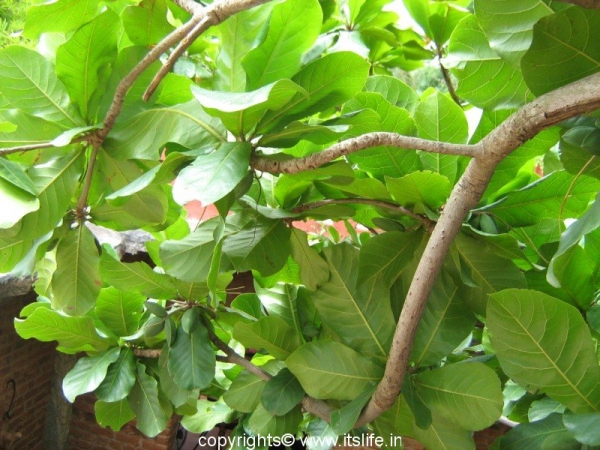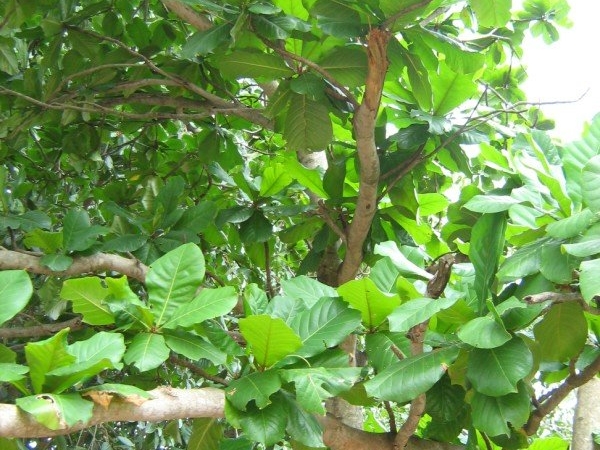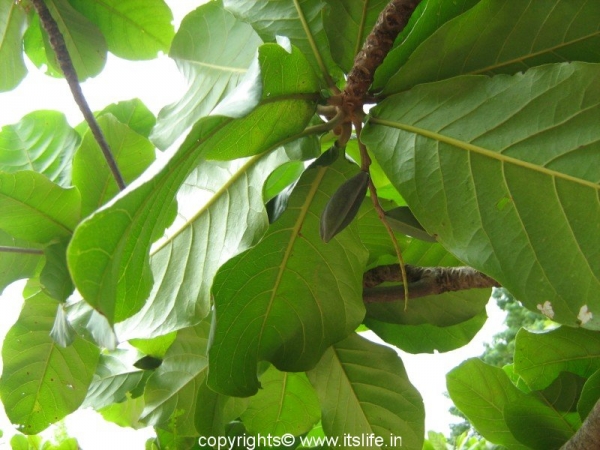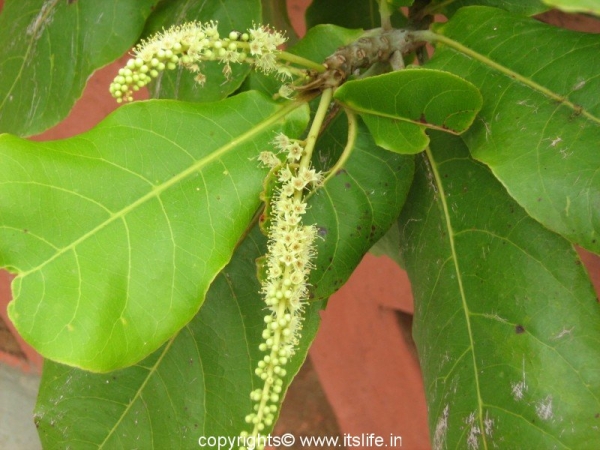Indian Almond tree is planted widely in Bangalore and surrounding areas as an ornamental tree. It is known as Jangli Badam in Hindi, Kadu Badami in Kannada, and Kshudrabija or Desabadama in Sanskrit. The botanical name is Terminalia catappa and belongs to Combretaceae (Rangoon creeper) family.
Indian Almond tree is a native of Malaysia. It is tall semi-deciduous tree with smooth grey bark. The branches spread horizontally in layers around the trunk.
Leaves are green, large, rough, oval, and leathery.
The leaves turn red before falling.
Flowers are very small, greenish-white. They bloom on spikes at the end of the branches.
The green fruit is almond shaped and contains a nut. The nut taste is similar to an Almond. Some of them turn reddish-purple when ripe. The nuts are used to extract Oil. The wood is used for house building. Tassar silk procured from the silk worms like to feed on the leaves of Indian Almond tree.
Propagation:
Propagation is from cutting and seeds. It is a fast growing plant and grows well in sandy soil and tropical climate.





